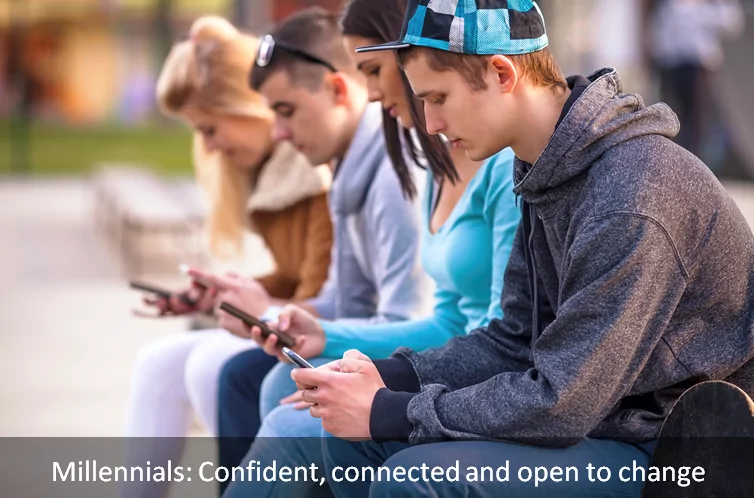The Multigenerational Workforce: Part II

In this post, the second of four on how to use a multigenerational workforce as a training resource, we focus on the workforce’s future–Millennnials or people who are now between the ages of 15 and 35.
As discussed in last week’s series of posts on summer jobs, while young workers, especially very young workers, can pose training challenges, they also have much to offer organizations, even at the level of training.
A Portrait of the Millennial Workforce
A 2010 report by the Pew Research Center described Millennials as “confident, connected and open to change.” More specific findings included:
• 75% of Millennials report having a social media profile compared to 30% of Boomers.
• 83% of Millennials report sleeping with or next to their cell phone compared to 50% of Boomers.
• 64% of Millennials, more than any other group, report having texted while driving.
• While only 1% of Millennials identify being famous as a life priority, 52% identify being a good parent as a life priority.
• In comparison to other generations, Millennials are more likely to have at least some college education and this holds particularly true for Millennial females.
• Millennials are America’s most diverse generation yet.

Millennial Workers as a Training Resource
There is no question that younger workers often require more training and more frequent training, as well as more direct mentorship. As explored in many past articles and white papers on this site, however, they also possess experiences, skills, know-how and perspectives that are unique and can be leveraged as a training resource.
Social Media Skills: It’s a stereotype but statistically true that Millennials are more comfortable with social media technologies than any other generation. Indeed, they often have an intuitive sense of how to use and leverage new technologies. As discussed in last week’s post on summer jobs, even a young part-time worker can often prove to be an invaluable source of knowledge about how to make the most of social media tools.
Diversity: Millennials are the most diverse generation yet, with close to 40% identifying as visible minorities. In addition, Millennials of all backgrounds are generally more ready to embrace diversity. Generally, they report high levels of tolerance for other racial, religious and ethnic groups and for people who identify as gay. Indeed, Millennials proved to be an especially strong force in the gay marriage lobby. Infusing a workplace with Millennial workers, then, holds the potential to bring about a climate change—a climate change that may, over time, raise awareness, change attitudes and make the work environment a more welcoming place for people from all backgrounds and ages.
Work-play Balance: Millennials like to work and to play—not just because they are young. As a generation, they’ve proven particularly demanding as workers and many organizations have responded. Millennial workers in the high-tech industry often expect free food throughout the day (ideally, organic with a range of vegan and gluten-free options), on-site gym facilities or passes to nearby gyms and yoga studios, the ability to work flexible hours or remotely as needed, the ability to bring pets to work and the freedom to skateboard or scoot around the office. While older workers may find these Millennial demands and habits overly demanding and self-indulgent, there is something to learn from their expectations. Namely, however you slice it, Millennials appear to recognize that sustainable work habits require a healthier lifestyle and this means a better work-play balance.
While work-play balance may not appear to have anything to do with training, think again. Millennials are quickly transforming what training looks like on every level. Consider, among other innovations, the rapid rise of gamification and mLearning. On-demand, mobile, fun and rewarding, these approaches to training are just one of the many ways in which Millennials have already influenced the training landscape. As they begin to assume a higher percentage of managerial roles, however, we can expect their impact on training and organizational development to expand, and if they are who they claim to be in surveys, we can also expect their workplaces to reflect a new set of open, flexible and progressive values and priorities, which stands to benefit everyone.